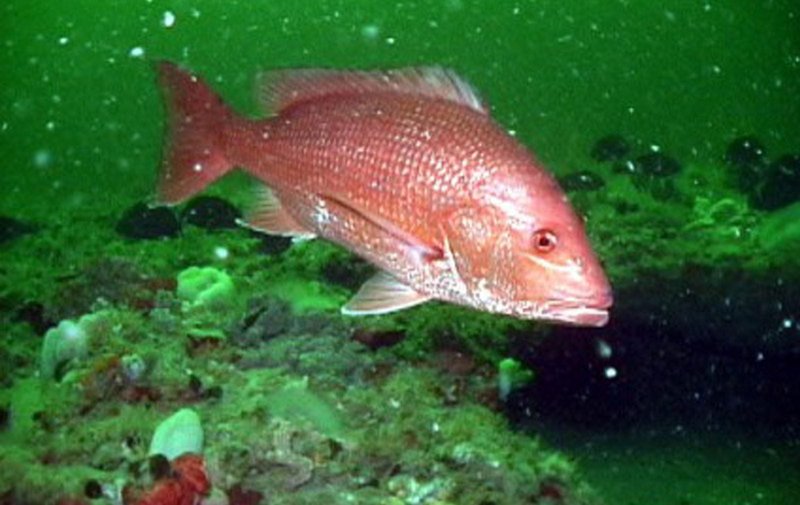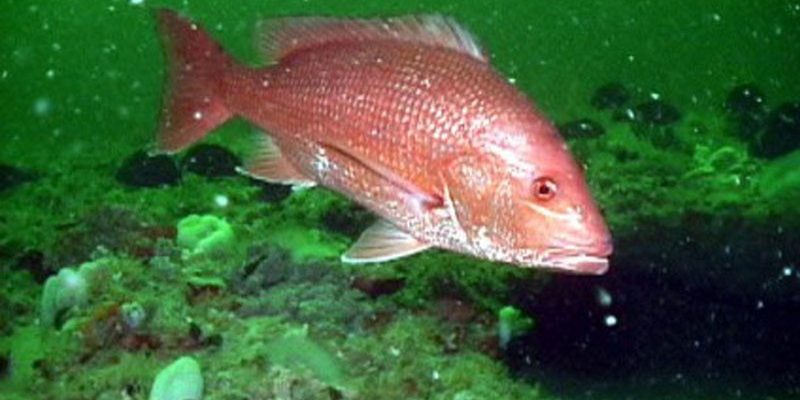
You might be surprised to discover that “snapper” isn’t just a term for a fish; it often conjures images of vibrant coral reefs and delicious dinners. But in the realm of nature, the term refers to a unique group of fish known for their distinctive appearance and fierce hunting skills. When we talk about snappers, we’re diving into a world filled with striking colors, varied habitats, and intriguing behaviors.
Imagine being under the sea, surrounded by beautiful corals and schools of bright fish. Then you spot a snapper—a sleek, agile predator, gliding through the water with grace. With their sharp teeth and keen eyesight, they are built for the hunt. But what exactly makes snappers so special, and why should we care about them? Let’s explore everything you need to know about these fascinating creatures.
What is a Snapper?
Snappers belong to the family Lutjanidae, which includes around 100 species of fish. They are primarily found in warm, tropical waters, especially around reefs and in shallow coastal areas. One of the most well-known species is the red snapper, recognized for its bright red color and delicious flavor. Generally, snappers have a distinctive body shape with large, pointed teeth that help them catch prey efficiently.
These fish can vary in size, with some species reaching lengths of up to three feet! Depending on the species, their colors can range from vibrant reds and yellows to muted browns and greens, allowing them to blend in with their surroundings. This camouflage is a crucial survival tactic, helping them evade predators and ambush prey.
Snappers primarily feed on smaller fish, crustaceans, and other marine animals. They are considered opportunistic feeders, meaning they’ll adapt their diet based on what’s available in their environment. This flexibility allows them to thrive in various marine ecosystems.
Physical Characteristics of Snappers
When you think of a snapper, the first thing that might come to mind is its stunning body. Snappers have a streamlined shape that makes them impressive swimmers. Their forked tails provide them with the speed required to chase down fast-moving prey. The large, prominent eyes give them exceptional vision, particularly in low light conditions, making them efficient hunters.
One standout feature of snappers is their jaws. Equipped with sharp, strong teeth, these fish can crush the shells of crustaceans and grasp slippery fish. Their mouths are designed not only for catching but also for swallowing prey whole, a necessary adaptation for their survival.
Looking closely, you’ll notice the coloration of snappers plays a significant role in their habitat. The reds and pinks of the red snapper help it camouflage against vibrant coral reefs, while other species may have more muted tones that allow them to blend into sandy or rocky environments—truly a case of nature’s artistry at work!
Habitat and Distribution
Snappers are mostly found in warm and tropical waters. They frequently inhabit coral reefs, rocky structures, and mangroves. This diverse habitat range is crucial for their survival, as it offers protection from predators and abundant food sources. Snappers can usually be found at depths of up to 200 meters, although some species can venture into deeper waters.
Geographically, snappers are distributed across many parts of the world, including the Atlantic, Indian, and Pacific Oceans. In the Atlantic, you’ll find them along the coasts of the United States, particularly around Florida and the Gulf of Mexico. The Pacific is home to other species, like the famous red snapper, which is especially sought after by fishermen due to its taste and market value.
The adaptability of snappers to various environments has allowed their populations to thrive, but they are not without challenges. Overfishing and habitat destruction, particularly due to coral reef damage, have impacted their numbers in certain areas. This is why understanding their habitats is essential for their conservation.
Diet and Feeding Behavior
As opportunistic feeders, snappers have a varied diet that can shift based on what’s available in their environment. They primarily snack on smaller fish and crustaceans—think shrimp, crabs, and even mollusks. This predatory nature makes them effective hunters in their underwater realm.
What’s fascinating is how snappers hunt. They often employ a strategy known as ambush predation, where they lie in wait for unsuspecting prey. By using their quick reflexes and sharp vision, they can strike with precision when the moment is right. Their feeding habits also encourage them to explore their surroundings, making them integral players in their ecosystems.
Although they’re known for their hunting capabilities, snappers also play a role in controlling the populations of the smaller fish and invertebrates they consume. This makes them not only important for biodiversity but also for maintaining the health of reef ecosystems. Balanced ecosystems lead to vibrant underwater landscapes, which benefits all marine life.
Reproduction and Lifespan
Snappers exhibit fascinating reproductive behaviors. Most species of snapper are known to spawn in warmer months, usually in groups. During this time, males will compete for the attention of females, showcasing their strength and vitality. The females release eggs into the water, which the males then fertilize. This method ensures that many eggs are spread out, increasing the chances of survival.
As for their lifespan, snappers can live quite long, with some species reaching up to 50 years in the wild. However, factors like fishing pressure and habitat destruction can significantly affect their life expectancy. Ensuring sustainable fishing practices and protecting their habitats is crucial for maintaining healthy snapper populations.
Interestingly, some species can change sex as they age. For example, many snapper species start as female and may transition to male later in life. This fascinating characteristic is a survival strategy that allows populations to adapt based on the gender ratio in their habitats, ensuring successful reproduction.
Importance in Ecosystems
Snappers play a vital role in marine ecosystems. As both predator and prey, they maintain the balance of marine life. By preying on smaller fish and invertebrates, they help regulate their populations, contributing to overall biodiversity. A healthy snapper population can indicate the health of its habitat—if they thrive, it often points to a thriving ecosystem.
Moreover, snappers are essential in the food web. They serve as prey for larger predators, including sharks and humans. This interconnection means that if snapper populations decline, it can have cascading effects throughout the ecosystem, pointing to the importance of conservation efforts.
Not to mention, snappers are a staple in recreational and commercial fishing. Their delicious taste makes them a favorite catch among anglers, which can lead to overfishing if not managed properly. Responsible fishing practices, like catch limits and seasonal restrictions, are vital to ensuring snappers continue to thrive for generations to come.
Conservation Status and Threats
While snappers are widespread, they are not free from threats. Overfishing is one of the biggest challenges they face, particularly due to high demand in the seafood market. Unsustainable fishing methods can lead to significant declines in populations, disrupting the delicate balance within their ecosystems.
Another significant threat is habitat loss. Coral reefs, which provide shelter and breeding grounds for snappers, are increasingly affected by climate change, pollution, and destructive fishing practices. Coral bleaching, caused by rising sea temperatures, can devastate these critical habitats, making it harder for snappers to survive.
Conservation efforts are underway to protect snapper populations. Many regions have established marine protected areas, which help safeguard their habitats from destructive practices. Sustainable fishing initiatives are also being promoted to educate fishermen and consumers about responsible practices. Our collective efforts can make a real difference in ensuring snappers and their environments endure for future generations.
Fun Facts About Snappers
- Colorful Characters: Depending on the species, snappers can display vivid hues ranging from bright reds to deep blues and yellows.
- Size Matters: The largest species can reach lengths of up to three feet, making them quite impressive swimmers.
- Long Lifespan: Snappers can live for several decades, with some individuals reportedly living over 50 years.
- Change is Good: Some snapper species can change their sex based on environmental factors and population dynamics.
| Characteristic | Details |
| Size | Up to 3 feet |
| Habitat | Tropical and subtropical waters, generally around coral reefs |
| Diet | Smaller fish, crustaceans, and mollusks |
| Lifespan | Up to 50 years |
| Reproductive Behavior | Group spawning, changes in sex |
FAQ
What is a snapper’s primary diet?
Snappers primarily feed on smaller fish, crustaceans, and invertebrates. They are opportunistic feeders, adapting their diet based on available prey in their environment. This makes them effective hunters, allowing them to thrive in various underwater ecosystems.
Are all snappers the same species?
No, snappers belong to the family Lutjanidae, which includes around 100 different species. Each species may have different characteristics, such as size, color, and habitat preferences, with some of the most famous being the red snapper and yellowtail snapper.
How do snappers reproduce?
Snappers typically reproduce by group spawning during warmer months. Males compete for females, and the females release eggs into the water, which are then fertilized by the males. This strategy helps increase the survival chances of their offspring.
What role do snappers play in the ecosystem?
Snappers are crucial for maintaining the balance in marine ecosystems. As both predator and prey, they help regulate populations of smaller fish and invertebrates, contributing to overall biodiversity. Their health can also indicate the well-being of their habitat.
What threats do snappers face?
Snappers face several threats, including overfishing and habitat destruction. As demand for snapper in the seafood market continues to rise, it’s essential to adopt sustainable fishing practices to ensure their populations remain stable.
Can you eat snapper?
Yes, snapper is highly regarded for its taste and is popular in many cuisines around the world. However, it’s important to source snapper from sustainable fisheries to avoid contributing to overfishing.
How long do snappers live?
Snappers can live up to 50 years, depending on the species and environmental factors. Sustainable practices and habitat protection are critical for ensuring these fish reach their full lifespan.
What is the largest species of snapper?
The biggest species of snapper can reach lengths of about 3 feet. The red snapper is one of the most well-known species, but sizes can vary significantly among the different species within the Lutjanidae family.
Are snappers endangered?
While not all snapper species are endangered, some populations are at risk due to overfishing and habitat loss. Conservation efforts are in place to protect these fish and their environments, emphasizing the importance of sustainable fishing practices.
Do snappers change their sex?
Yes, some snapper species can change their sex based on various factors, including age and population dynamics. This fascinating adaptation helps maintain reproductive success within their habitats.
Where can I catch snappers?
Snappers are commonly found in tropical and subtropical waters, particularly around coral reefs. Popular fishing locations include areas along the coasts of Florida, the Gulf of Mexico, and various Pacific islands. However, it’s best to check local regulations and practices to fish sustainably.
What types of fishing gear are best for catching snappers?
When fishing for snappers, anglers often use light to medium tackle with strong lines. Live bait, such as shrimp or small fish, is a popular choice. It’s also effective to use lures that mimic the movement of small prey to entice snappers.
How can I support snapper conservation?
Supporting snapper conservation can begin with choosing sustainably sourced seafood, advocating for protected marine areas, and promoting responsible fishing practices. By raising awareness about the importance of these fish, you can contribute to their preservation for future generations.

